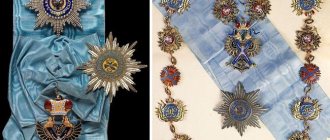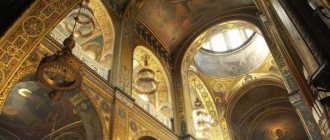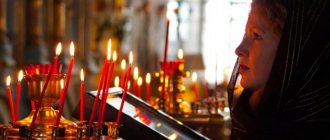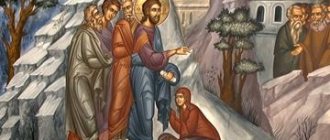For a long time, it was the Church that dealt with the issue of population registration and census. Thanks to metric books kept by clergy, today there are records of people’s births, the most common causes of death, and the genealogy of many families can be traced.
However, a unique document of its kind is the confessional list, which was drawn up by the priest once a year and made it possible to track how close a person was to the Church. The document was originally created to track the spiritual growth of a person and society as a whole, but in the end the civil and political benefits of such records became much more important.
The confessional lists included a report on all parishioners who lived in the parish
This report included a list of all parishioners who lived in the territory of the church parish. All families were recorded in the confessional lists, except for infants under 1 year of age.
The statement also indicated whether the person was in church this year during Lent, or during other fasts, whether he attended confession and communion with his priest, and if not, then for what reason he did not do this.
Two copies of such work were always prepared. One remained for storage in the church, and the other was sent to the consistory, where this statement was filed together with reports from other neighboring parishes, for example, parishes of the same spiritual board.
This is what the books looked like externally - confessional paintings separately about each village for a certain period of time
Currently, the paintings are stored in regional archives in the funds of ecclesiastical consistories, as well as in diocesan departments.
The paintings indicated the social status of a person, his ownership, place of residence, and age. This is why parish registers are one of the most important sources when conducting genealogical research.
Those absent from confession
People could be absent from confession for several reasons:
- for childhood;
- on absence, for example, military service.
If he was absent from his place of residence for more than a year, a person could confess to another priest, but he had to document this fact.
Lists of those who did not confess were submitted to the spiritual consistory. If a person has not been to communion for more than three years , then by decision of the diocese he could be classified as an Old Believers.
The metric book is a book in which civil registration records were kept.
A parish register is a book in which official civil records were kept, that is, births, deaths, marriages from the beginning of the 18th century. The metric book was started for exactly one year, and was divided into three parts.
The first part is “About those born.” Here the child's date of birth, gender and name were indicated. As well as his place of residence, nationality, first name, last name, patronymic of his mother and father. The child's godparents, their place of residence, and class were also registered. They also indicated the fact who baptized the child and where the baptism took place.
This is what the entry “about those born” looked like in the metric book. As we can see, the date of birth, gender and name of the child are indicated. Nearby, in a large column, the child’s parents and the priest who baptized are indicated.
The second part is “About those getting married.” Here they indicated the date of the wedding, first name, last name, patronymic, age of the bride and groom. For each spouse, it was recorded how he got married. Witnesses were also recorded in the metric book, as well as who performed the wedding.
See also: Is it possible to sign a post?
This is what the entry “about those getting married” looked like in the metric book. Here we see that the wedding date, first name, last name, patronymic, bride and groom were indicated
The third part is “About the Dead.” The number, date of death and burial of the person were recorded here. And also where the person was buried, in what class and ownership position, his name, surname, age and cause of death.
This is what the page in the metric book “about the dead” looked like, where the number, date of death and burial of the person were recorded. And also, why did the person die?
Conducting confessional lists was necessary especially in those places where population censuses were carried out very rarely. Such materials, rare for our time, can be found today.
The composition of the murals was accepted by His Holiness Patriarch Andrian of Moscow
The composition of the murals was accepted by His Holiness Patriarch Andrian of Moscow in 1697. It was adopted in connection with the struggle at that time against the Old Believers and the emergence of schismatics.
The drawing up of confessional paintings was adopted by His Holiness Patriarch Andrian of Moscow in 1697. It was adopted in connection with the fight against the Old Believers and schismatics
At the very beginning, the paintings were supposed to consist of three lists. In one - people who went to confession, in the second - people who did not go to confession, and in the third - those same schismatics.
But such reporting was never implemented. Soon Peter I issued a decree in which he ordered everyone to go to confession, or else the person had to pay a fine.
From that time on, there was an order to all confessors to submit lists only of people who had not confessed. But only in 1718 did they begin to implement this decree.
Peter the first issued a decree in which he ordered everyone to go to confession and communion, otherwise the person had to pay a fine
In 1722, the Holy Synod decreed that all people, starting from the age of seven, should attend confession and communion with their priest. If a person confesses and receives communion not in his own parish, but in another, it was necessary to provide a certificate to the church at his place of residence.
From the same year, it became mandatory to maintain registrations in all parishes.
The final form of confessional paintings was confirmed by Anna Ioannovna in 1737
The finally confirmed form of confessional paintings was determined by Empress Anna Ioannovna in 1737.
The finally confirmed form of confessional paintings was determined by Empress Anna Ioannovna in 1737
But in 1917, confessional paintings were abolished. But even then, after the abolition, many parishes continued to carry out paintings of parishioners. Many paintings were destroyed as having no historical value.
Now let's look at an approximate record of confessional paintings, in which the necessary entries were made.
1917
this year confessional paintings were canceled
The descriptions of the paintings differed due to many factors, for example, the year the document was written, the area where the parish was located, and the presence of a priest in the parish.
At the very beginning there was this entry:
- painting - the name of the diocese, the name of the spiritual government;
- village - the name of the village, exhibition or graveyard;
- church - the name of a temple, monastery;
- priest - the name and surname of the parish priest.
Then, after everything, there was this entry:
“... from the clerics of the lower ranks of people found at this church in the parish with a statement against each name about their existence on the Holy and Great Pentecost, as well as on other fasts, at confession and holy communion for this - then a year was signed.”
What confession paintings tell
These reflections were born in the archives of Rostov the Great and Yaroslavl while working on the papers and documents of the village of Gumenets, which now does not exist.
I would like to dwell on such a phenomenon as confessional paintings, and talk about their role in the spiritual life of Russian society in ancient years.
It is not known exactly when in Rus' such an image of some kind of control over the mentality of each individual person and, as a whole, of the peasant community or church parish in the city was established. According to historian and art critic A. Melnik - only in the middle of the 18th century. The political and civil benefits of this measure were undoubtedly significant. The spiritual benefits were questionable.
When the Letter becomes the main one
The initial data is as follows. A Russian person could be anyone by nationality: Merey, Vesye, Chud Belogola, Cheremis or Chuvash, but he must be of the Orthodox confession, that is, a member of the dominant Church in Rus'. At the same time, it was categorically undesirable to deviate into various interpretations, such as papism and Protestantism, which struck papism in the very heart. It was categorically impossible to openly profess the old faith of the pre-Nikon version - in the 18th century, the events of the past century were still vivid in memory: the necessary and mature reforms in the depths of the Church, carefully carried out by Patriarch Nikon, after his removal from the primatial see and subsequent imprisonment in Ferapontovo, and then inglorious and the uncanonical deprivation of his patriarchal rank at the quite robber council of 1666, were rudely and categorically intercepted by the ruthless and blind administrative state machine - with the involvement of streltsy detachments and executions of the disobedient, with an epidemic of collective self-immolations, with the siege of the Solovetsky Monastery and other indecent and shameful things that could be called a war with one’s own people, which resulted in the exodus of a significant part of the population, propagated by the gifted “Chrysostoms”, former members of the circle of “lyubomudrov” Avvakum Petrov and Neronov, into the Siberian and Trans-Ural wilds.
The Great Patriarch Nikon understood that by the middle of the 17th century the church body had ossified right before his eyes, and the Letter in it began to dominate over the creative and life-giving Spirit.
In the 19th century, the same disease of ossification and emasculation of the church spirit began (or did it continue? - how can you answer in a single word?) And our confessional paintings are direct evidence of this. Looking ahead, I’ll immediately say what such a disease is fraught with if it is not treated: the ill-fated years of 1905 and 1917, the mass silent departure of the people from the faith and the Church, the indifferent look at how visiting foreigners - Latvians, Chinese and Poles - rob silver and gold from centuries-old images, they desecrate shrines, destroy temples built by their ancestors, destroy the entire Russian statehood, destroy the economy, for a pittance - for a pencil factory - they sell it to various international adventurers like Hammer (who was a little over 20 years old at the time, but had no one with the Soviets have more to do) paintings by Raphael and da Vinci... When else has such profit been made? – Only at the turn of eras. And then - countless hecatombs of human sacrifices, in which the best people, the basis of the state structure, were destroyed. What's next? And then what we see everywhere today: the savagery of both man and nature. The disappearance and dissolution of Russian people in some kind of infernal abyss - and very soon completely different peoples will come to this place, which we did not preserve and protect: yellow, as Andrei Bely and Alexander Blok predicted at the beginning of the 20th century, or black , or even white-skinned, but with a different language and different tasks - to own the once great Russia as raw materials...
But let’s return to the initial parameters, to the pattern according to which the church authorities of the past tried to cut the Russian man of that time.
Spiritual father or overseer?
So, the Russian person belongs to the ruling Church; not a schismatic, not a Protestant, not a Catholic. And once a year he is obliged (usually during Great Lent) to confess in his parish church and partake of the Holy Mysteries of Christ.
Let us note at the same time: with the reforms of Peter I, penitential discipline, penitential custom and everything connected with them are undoubtedly modified and degraded. The consistory archive is filled with administrative cases about violations, theft, drunkenness and all sorts of indecencies of both the laity and the clergy - and these are undoubtedly signs of the same disease that was mentioned above.
The patriarchal nature of relations disappeared: now there is state power between the clergy and the people
“Petrine legislation did not stop at secret confession,” writes Professor S. Smirnov in his work “Ancient Russian confessor.” – There is a well-known definition of the Spiritual Regulations, according to which a priest who learns in confession about an intention to harm the honor and health of the sovereign, about an intention to commit rebellion and treason, or about a temptation already created among the people by reporting a false rumor about an unprecedented miracle, is obliged to immediately denounce the culprit. It is rightly noted that this demand turned the spiritual father into a police agent; the patriarchal relationship between him and his (spiritual) children disappeared; between the clergy and the people there is state power, which takes upon itself the exclusive leadership of popular thought. But this definition is only one of the links in the chain of Peter’s measures, imbued with a system of denunciations, in which the clergy was also involved”[1].
It was then, in the post-reform church era - from about 1722 - that the principles of confessional paintings were developed. What were they?
For a year, the priest kept detailed records: from which village, name, patronymic, relationship with other confessors “at home”, number of years, confessed and received communion - oh, and if “he wasn’t” - for what reason: “due to absence” “due to negligence”... - and now interesting reasons are recorded: “due to cooling towards faith” (these are the very shoots from which, over the coming century, total atheism will grow, which has become a plague and a curse for Russia).
At the beginning of the next calendar year, such a detailed report on each parishioner - and such, for example, at the church of the village of Gumenets, Rostov district, Yaroslavl province, at different times there were from 600 to 1000 people of different genders and ages - was submitted to the Spiritual Board. And there the report, I suppose, was carefully analyzed by some specialist (this is, of course, in the best case, but most likely everything was simply filed into plump folders by clerks and clerks and forever placed in a dusty archive).
Of particular interest, of course, were those individuals who “were not there” - due to some, so to speak, unreliability and dubious behavior. And in the future, some aspects of such data - if necessary - were taken into account where necessary, right up to the police department. So, for example, the formal reason for the refusal to marry the peasant from Lomov Avtonom Sikachev was his two-year absence from confession and the Holy Mysteries of Christ.
The confessional of any year and any parish ended with the following completely bureaucratic formula (but also with a police connotation):
“In addition to the above, in that our Gumen parish there are no registered and hidden courtyards of anyone, and in the said courtyards, except for the above [mentioned] no local residents and newcomers of any rank and age are found under cover and those who oppose the Holy Church, who are shown for their opposition, but there are no recorded schismatics, and as this painting shows, they truly confessed and partook of the Holy Mysteries, but if from this testimony of ours according to some (unintelligible) denunciation, although there is little that is false, no concealment or cover-up, then we are all guilty according to the law rules and decrees and fines.”
Pay attention to the phrase: “those who oppose the Holy Church, who are shown to be disgusting” - that is, some spiritual backlash, or priestly shortcoming, is still allowed - some “nasty.” And in fact, it’s not right to drag the rector by the collar to confession and communion of some stubborn and stiff-necked villagers!
But the main thing here is this: “there are no known schismatics.” Those people who openly professed their adherence to “ancient piety” were considered “recorded.” Well, the conversation with them in power was different, but that’s not what we’re talking about now.
The priest of that time was a kind of eye and ear of the state on the ground
So, the priest of that time was a kind of eye and ear of the state on the ground, through which the authorities quite successfully controlled the population of any, even the most remote, corner of the Russian land. And here we are not talking about violating the secrecy of confession, no, but these annual lists of confessional lists themselves can tell interested parties a lot of things. “This was convenient for the supervision of the parish priest and his reporting,” states Professor S. Smirnov.
And even in the 20th century, the previous confessional paintings were very useful. Thus, confessional paintings of the Rostov spiritual government dating back to the time after 1861 were moved to the Yaroslavl archive. The question is: why? In my opinion, the answer is obvious: for the same control over people - but now by the provincial Cheka. Indeed, by the 20s of the 20th century, many of the former confessors were still alive, and pre-revolutionary confessional paintings, if necessary, provided the security officers with additional material for development. It is clear that 99% of this “raw material” was never used, but even 1% gave grounds for accumulating pre-revolutionary priestly reports under one roof.
To God as a duty
One can have different attitudes towards this – of course – formalization and bureaucratization of the spiritual life of Russia. Is there a violation of personal freedom here? Without a doubt. Is this a sense of the primacy of the notorious Letter over the Spirit? Certainly. This is bad? Well, depending on which side you approach the matter from. Observing fasts, fasting days, reading the daily prayer rule, observing the Divine commandments as much as possible, participating in the twelve feasts of the Church, visiting church on Sundays and holidays - is this bad? Good and desirable. And just once a year, during Great Lent, to begin a completely formal confession and receive Communion - is this difficult and difficult? No, and not bad, and not hard, and not difficult. On the contrary, some kind of church and spiritual discipline, even more stringent, in my opinion, is necessary as the foundation for the building.
But here we step on the shaky ground of what in the middle of the 20th century Western philosophers would call the abstruse term “existential choice.” Everything that was counted - desirable, not difficult, useful for the soul and even for the body - was in a sense deformed by this notorious obligation. Well, once a year you are obliged to force yourself to the temple, say something there in front of the cross and the Gospel: you counted your wife’s ribs as a batog, for example, or something similar... And then the priest will cover you with a stole and say something, and you and with your peasant mind you cannot understand what the priest is saying, even if you hear: “By the power given to me by God, I absolve and forgive you from your sins...” And then proceed to the Chalice. What do you know about the Eucharist? About the transformation of bread into the Body, and wine into Blood? And not just into the body and blood, which in itself is difficult to understand and imagine, but into the Body and Blood of God Himself!.. And where can all this be placed?
It doesn’t matter whether you understand what you believe in, the main thing is that the priest writes down: “I had Confession and Communion.”
But the main thing here is not that you don’t understand, but that the priest will write you down in some “book of life”: “was.” So you have fulfilled your Christian duty. Go with God on all four sides - and come again in 365 days. That's all, it turns out, spiritual life. And you are a worthy member of the Orthodox rural community, and your spiritual father has fulfilled his duty to the authorities.
Of course, sermons after the Liturgy could improve matters. Or the establishment of a parochial school at the church (which was done at the end of the 19th century on Gumenetsky Hill). In any case, the priest had and even was obliged to make certain efforts to the moral and spiritual enlightenment of the common people. But the class age-old humiliation of the ordinary rural clergy, the great power of human inertia, the routine and monotony of church life and the rural way of life did their job, and what was once alive in someone became emasculated, cooled and ossified.
But once upon a time – in ancient Rus' – a different principle reigned: “Repentance is free.”
I do not at all want to condemn the Gumenets - and more broadly - Russian clergy for the fact that by the beginning of the 20th century, infernal and destructive forces had accumulated in the depths of the people to a critical mass, as if bursting out of a volcano in a time of terrible bloody revolutionary unrest. But each of the members of the Russian world contributed to this terrible future - for decades and centuries.
But we can’t turn back now.
Unlost names
Confessional painting of the Archangel Church in the village of Verkhniy Bishkin for 1773
We will still find positive aspects in the paintings: thanks to the paintings, we have the opportunity to glance out of the corner of our eye into the everyday life of the people who lived here, in Guments and nearby, a century and a half ago - after all, even in our memory, some of the bearers of these surnames were still healthy and tangible and did not leave these places for various reasons. And it is thanks to these Gumenets annals of the Church of the Intercession of the Most Holy Theotokos (compiled, perhaps, by the completely indifferent hands of priests who did not make the former people more Orthodox than they were in essence) that we can learn their names and family nicknames.
Here, for example, are the paintings for 1843 (of course, I will not give them in full):
“The peasants of the village of Gumenets:
Ivan Nikitin - 68 years old, his wife Varvara Borisova - 68 years old, their children: Paraskeva, girl - 41 years old, Alexander - 38 years old, his wife Nastasya Nikolaeva - 38 years old, their children: Mikhailo - 16 years old, Klitikia - 15 years old, Ivan – 11 years old, Peter – 7 years old, Evlampy – 3 years old;
Widow Olga Nikitina - 69 years old, her children: Foma Andreev - 44 years old, Kondrat - 39 years old, Lazar (single) - 19 years old, Fomina's wife Paraskev Tikhonov - 44 years old, their children: Matrona (girl) - 21 years old, Olga - 11 years old, Kondrat’s wife Agripena Danilova – 37 years old, their children: Philip – 10 years old, Ivan – 5 years old.”
“Peasants of the village of Loma:
Ivan Grigoriev - 62 years old, his wife Matrona Stepanova - 58 years old, their children: Fedor - 24 years old, his wife Fekla Grigorieva - 22 years old, John's daughter-in-law - soldier Marina Mikhailova - 26 years old, his brother Gavrila Grigoriev, single - 40 years;
Dimitry Saplin, widow - 56 years old, his daughter Matryona, a girl - 29 years old;
Andrey Semenov, widow – 71 years old, his son Evstafiy – 47 years old, his wife Neonila Kiprianova – 44 years old.”
“Conclusion of the paintings:
Peasants and peasants - 118, due to neglect they did not receive communion - 42, due to cooling towards religion - 1, due to absence - 3, due to schism - 1.
Their wives and widows are 142.”
In the heat of excessive jealousy
Continuing my thoughts about confessional paintings, thanks to which, I repeat, we know many, many names of people who once inhabited the surrounding land and without which today no archival work, no searches on one’s family tree and on any genealogy are unthinkable, I will give as a negative example - direct Quote from the Journal of Secret Affairs from 1818 to 1836 under No. 230-1-13111 of the Yaroslavl Spiritual Consistory - the following story:
“In 1830, the Mayans listened for 5 days: Report of the Uglich district. Nikolsky, which is on Moloksha, priest Stefan about confessing to him during confession by Count Orlov's servant Grigory Timofeev of the murder of his wife. They ordered: As item 11 of the addition of the Spiritual Regulations stipulates that confessors declare the intention and unrepentance of the person confessing a crime. Like theft or evil intent against the highest power, which he <...> sin reveals to the confessor, not wanting the end (?. - A.G.) of him only to be confirmed in malicious intent, and the 13th is commanded to the confessor in the case of unreliable (?. - A.G) and the inconvenient sin of asking permission from your bishop without naming the person of the repentant, then admonish the reporting priest in the presence of the consistory (emphasis added. - A.G.) and strictly confirm to him that in future he will act in accordance with the indicated rules, but not contrary Therefore, submit a copy for the consideration of His Eminence.”
That is, in simple terms, priest Stefan hastened to fulfill one of the wishes of his superiors, expressed in the analysis of the incident with the murder of a priest on the ice of Lake Nero, namely: “May the (clergy) give a helping hand and to protect the general safety of the zemstvo police officer,” and the consistory admonishes his zealous “beyond reason” brother: it was necessary to first of all notify the Yaroslavl Bishop of Yaroslavl about the crime of the courtyard man Grigory Timofeev, and he would have already decided what to do and what to do, and not “report” about the secret of confession in front of all members of the Secret commission and especially not to run to the police officer. Disorder!..
Along the beaten track
What happened as a result? Where and how to look for the causes of the spiritual catastrophe that hit our country out of the blue 100 years ago? Is it not in living life that has passed and is no more?
Yes, there was strict regulation of the annual confessional paintings, there were also strict decrees prescribing where it was proper for parishioners to stand during services and what it was proper for clergy to wear. But here is another remarkable document: No. 13153 - “Decree on the provision by church clergy of information about the cooling of parishioners to the Orthodox faith” (1840. 13 f.). Before the “Great October Revolution” and the destruction of the church, we had to live for almost 80 more years.
Only the conciliar consciousness of the people could stop the destructive process
Well, okay, let’s say Father Vasily Rozov, namely he was the rector of the Gumenets Church in 1840, submitted such a list to the Spiritual Board. What's next? But the fact of the matter is that it’s nothing. The ruling bishop knew and felt that things were wrong, that something was wrong, that something irreversible was happening to the people of God - but he followed the usual administrative path, well-worn for centuries: issue a decree, oblige the dean to bring it to the attention of the subordinate clergy , they will collect some data on parishioners, make lists, hand them over first to the dean, they, in turn, to the Spiritual Board (in our case, to Rostov), the district Spiritual Boards will bring everything in a heap to the Yaroslavl Consistory, the bishop will look... And that’s all ?.. That's the point, that's all. Everything will be neatly filed into a single folder, an inventory will be drawn up on the title page, the clerk will number the pages through and through - and the next volume, testifying to the constant activity of the consistory in the field of spiritual care of the flock, will take its place in the diocesan archive for the next century and a half, from where it will be brought to light God's hand of the explorer.
What could the diocesan bishop do? What could even the Chief Prosecutor of the Holy Synod himself do? I’m already reading K.P.’s accusation on the Internet. Pobedonostsev: since he knew about the disastrous coming revolution, why didn’t he stop it?.. I wonder how an idle armchair thinker imagines this? How could even such an outstanding person as Pobedonostsev stop the destruction of the Russian spirit? If the entire organism of the Russian state was permeated with millions of microscopic metastases? After all, only the conciliar consciousness of the people could stop the destructive process, and not an individual person, even if vested with high powers. If a writer is a pain, then a priest is probably a doctor.
“To the doctor, heal yourself!”
But this is how we find some of these doctors: archival file No. 3177 - about the failure of clergy to appear at fasts for confession and Holy Communion, 1825 - there are still almost 100 years before the collapse of the empire. But the seeds of unbelief, the seeds of temptation are already being thrown into the soil. And by whom? By the doctors themselves. What can we ask of patients!..
Case No. 12717 – about “disorders, indecency and temptation during the confession of parishioners by a priest of the village. Savinskoe by Pyotr Ivanov”, 1839, 21 sheets. And this is not the first thing: during the Great Lent of 1839, this priest did not serve a single Liturgy. What did you do then? You can’t blame your lewdness and laziness on some communists: Marx has not yet sent his “ghost” to wander around Europe.
Case No. 10208 – about the appropriation by the priest of the Kalyagin churchyard, Fyodor, of the compressed rye of the landowner I. Svirsky, 1833–1834, 66 sheets. I would like to draw your attention to the huge volume of the case and the two years of investigation. Does the reader sense the priorities of the investigators from the Spiritual Board?
And it was already very close to this: case No. 230-5-2346 - about the unauthorized opening of a drinking house by a priest from the village. Nizhnenikulsky Rybinsk district, 1869.
And now the breath of “new times” is clearly noticeable. But isn't that what should have been expected? Case No. 230-4-311A – about incitement by a deacon of the church. Dermenino Poshekhonsky district by Nestor Ivanovich Rozov of the peasants of the landowner Chikhachev to seek freedom, 1849–1855. Yes, as we see, the case about the revolutionary deacon lasted for an eternity - 5 years, but did not end with anything significant. The deacon was simply banned from serving in the priesthood and was left to live and live in his remote Poshekhonye.
And now here is case No. 230-6-863 - about the meetings taking place in the priest’s house in the village. Knyazev Vasily Stratilatov, at which the singing of revolutionary songs was allowed.
Is it necessary to somehow denote this by the word obvious-incredible?..
It is clear that these examples are exceptional and do not at all characterize the general appearance and character of the Yaroslavl (in particular) clergy of the century before last. On the contrary, not being included in the consistory documents in any capacity testifies to the personal piety and “quiet and silent life” of the unknown rural priests, which they prayed for daily in litanies and which the Lord gave them. Such was, for example, Father John Sokolov, such was Deacon John Matveev Sosnin, such was the psalmist Alexei Smirnitsky, who lived a long (or short) and inconspicuous life on the Gumenets Hill, fulfilling their eternal ministry, being essentially almost peasants. These were thousands and thousands of other Russian people: peasants, soldiers, priests... - the mass of people, people, Orthodox, the basis of the state. At the top - in the newspaper cries, in the headlines of these cases from the archives - sheer tares and rubbish surfaced.
Where to now?
But here’s what happened: the tares leavened the dough, and by the ill-fated year of 1917, the dough was ripe. It was then that professional bakers arrived from Switzerland, not to bake an all-Russian pie, but to fan a universal fire: “We will fan the world fire to the grief of all the bourgeois.” And Russia was destined to become the fuel for this fire. How can one not remember Svetlov: “He left the hut and went to fight, / To give the land in Grenada to the peasants.” Exactly! In Grenada, not here. Svetlov is feignedly surprised: “Where does the guy get Spanish sadness?” For Grenada-mirage, for his crazy Fata Morgana, the Russian fool laid down his head...
Of course, Svetlov is a poet with all the guild and psychological affiliation that follows from this fact. It is clear that he is not free. The nightingale, with a constricted throat, is trying to wheeze something. But here it is important to understand the tendency, to read between the lines, to reveal this terrible metaphor about the world revolution, in the fire of which the imperial thousand-year-old colossus was to perish: to put their human millions into the foundation of the future communist prosperity of the workers of Germany and other oppressed Europeans oppressed by the capitalists. And the poem is good. A true classic. But it’s Soviet. And so they served - faithfully, with full dedication, for their conscience - to the misanthropic regime that had established itself on Russian soil.
Another poet, unlike Svetlov - the great one, F. Tyutchev wrote in the middle of the 19th century - and this is also one of the prophecies, which again no one heard and to which no one heeded:
“For a long time now in Europe there have been only two real forces - the Revolution and Russia. No negotiations are possible between them; the existence of one of them is equivalent to the death of the other!
The Russian people are Christians not only because of the Orthodoxy of their convictions, but also because of something more sincere than convictions.
He is a Christian due to the ability for self-sacrifice, which constitutes, as it were, the basis of his moral nature. Revolution is the enemy of Christianity! Anti-Christian sentiment is the soul of the Revolution."
The Lord himself said 20 centuries ago simply about us and about the fate of the lost Russian Empire (and this fate is not yet complete):
“Every kingdom divided against itself is desolate; and every city or house divided against itself will not stand” (Matthew 12:25).
We hear? We see? We understand?
A specific pattern was used for confessional records of parishioners
Then there were lists of parishioners belonging to this parish. In the photo below, you can see an approximate table of confessional paintings.
Let's look at it in more detail. Under the numbers 1, 2, 3 - the serial number of the yard, house or family was written down. Then men and women were recorded. Under the numbers 5, 6 are the ages of males (male) and females (female). The ages of the parishioners were approximate.
Approximate table of confessional paintings that were used for recordings
Under the number 4 is a list of all the parishioners. In the heading of this column (where there are three small stars) people of the social groups to which the family belonged were written. At the beginning they wrote the people of the church clergy, that is, the spiritual, and then the household, that is, the courtyard people.
Sometimes the name of the village where the parishioners lived was indicated at this place. Sometimes it happened that the village belonged to several owners at once, then they were recorded according to each owner. Sometimes the list included neighboring parishes, in which the local priest was the confessor.
For pedigree
Thus, it is very easy to determine the composition of the family and the age of your ancestors from the confessional list. Since this document is official, you can fully rely on its accuracy to create your pedigree.
Confessional paintings are stored in regional (regional) archives at the place where they were compiled. In some cases, confessional statements can be found in regional archives, in the same place as metric books. For example, this is the situation in the Krasnodar region.
To obtain reliable information from the confessional list, it is necessary to know the time period and the church parish to which the locality belonged.
Since 1861, entries in confessional lists were divided into 5 social groups
In addition to the schismatics, the paintings were divided into seven groups. And starting from 1861, they were divided into five groups - spiritual, military, civil, urban and peasant.
In villages, the head of the family was recorded - last name, first name, patronymic, then his wife and children. After which even distant relatives were also recorded.
Under the numbers 7,8,9 it was written when a person confessed and received communion, with which priest. Usually in such a column they noted that they were the whole family. And in some more detailed records you can find mention of how many times a person took communion and confessed in a year.
In the column of those who did not confess, they indicated the reason why the person did not do this.
At the end the priest signed his name:
“... The priest (name, surname) had a hand in this spiritual painting.”
In addition to the priest's painting, the sheets may have a clip from a representative of the spiritual government.
After this table came a summary statement, which indicated the number of households in total, how many souls belonged to which social group, and how many male and female persons there were in the parish. At the end there was a certification announcement.
This meant that everything that was written, however, without any additions or concealment, because if the deception was discovered, the compilers could incur a fairly large fine.
Then came the signatures of the entire church clergy. If schismatics lived on the territory of the parish, they were recorded after the final summary.
Here is an example of the confessional painting of the Kuragin Archangel Church for 1769; there is a section for serving Cossacks under number N48. The family of one serving Cossack, Ekim Stepanov Katsyn, is recorded here, he is 36 years old. His wife Akilina Spiridonova is 36 years old and their children are Boris, 16 years old, Fedor, 2 years old, and Ivan, also 2 years old. Apparently the two boys were born twins.
An example of a confessional painting of the Kuraginskaya Archangel Church for 1769, where there is a section “serving Cossacks” under number N48. The family of one serving Cossack, Ekim Stepanov Katsyn, is recorded here
Such information will be convenient for those who are drawing up their family tree; it is in the confessional painting that you can find out what you need. Confessional paintings are a very valuable source of information for many families.
By leaving a comment, you accept the user agreement








